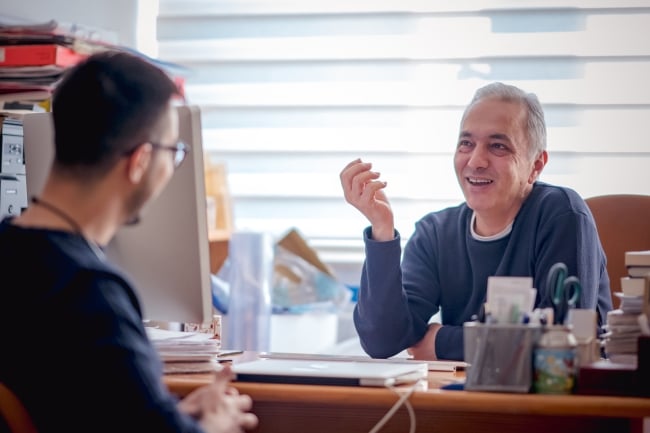You have /5 articles left.
Sign up for a free account or log in.

Professors rename their office hours to promote a student focus, eliminating barriers to access support.
ZeynepKaya/iStock/Getty Images Plus
For a student, making time to talk with a professor can feel intimidating.
In an April 2022 Student Voice survey by Inside Higher Ed and College Pulse with support from Kaplan, 28 percent of survey respondents said they never visited with professors during office hours, and among those who did, 55 percent only did so once or twice a term.
To make themselves more accessible and welcoming to students, faculty members are rethinking their office hours in name and function to put the focus on students.
Inside Higher Ed gathered five suggestions on how professors have changed their office hours to promote student success.
1. Choose new language.
The term “office hours” can be confusing to a new student.
One student told Melanie Hulbert—now vice provost for student success and dean of the Honors College at the University of Alaska at Anchorage, but then a faculty member at George Fox University—that she didn’t want to visit her political science professor during office hours “because that’s when she’s busy.”
That political science professor, and the entire George Fox poli sci department, changed syllabus language to share her “visiting hours” instead of office hours, to reframe the purpose. Other professors have changed syllabi to promote “student drop-in hours,” demystifying the purpose of these hours.
2. Offer appointment times.
The most recent Student Voice survey found one in five students could not attend office hours because the offered times conflicted with their schedule. Instead, faculty members can allocate times to students on an appointment basis, rather than open hours.
Kristie Hettinga, communications professor at California Lutheran University, established an online scheduling system so students could specify when they wanted to visit for office hours.
3. Connect online.
A June 2020 report from Bowdoin College found that, during the pandemic, that 58 percent of students relied on virtual office hours.
While some students may prefer an in-person office hours experience, offering online office hours can be less intimidating for the nervous student and more accessible for the busy student.
Bethany Fitelson, assistant dean and director of new student programs, involvement and leadership at Holy Names University in California, switched to completely remote office hours during the pandemic and has kept the model even after returning to campus due to its success.
4. Leave the office entirely.
For some professors, ditching the formal office setting provided better opportunities to connect with students. Faculty members can meet with students in more common areas like the library or dining hall, or take students on a stroll around campus.
5. Establish the purpose of visit.
Inviting students to engage in office hours for a specific purpose can engage learners more intentionally. Faculty members can require students to use office hours to review a draft assignment or a personal check-in meeting, for example.
Zachary Nowak, a Harvard University division of continuing education lecturer, requires office hours for students but also offers a breakdown of what an office hours visit can or should look like to clarify expectations and outcomes.
Do you have an academic success tip that might help others encourage student success? Tell us about it.




